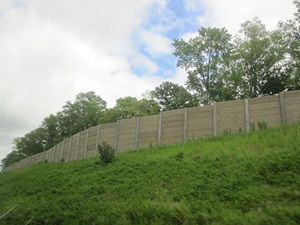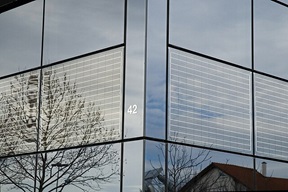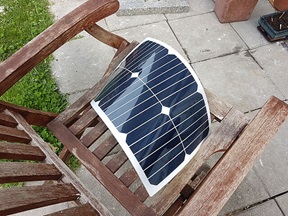Solar panel production disappeared from Europe over the past twenty years. Now, a new generation of solar panels is around the corner, and this could mean the return of solar panel production to Europe.

Changing production patterns
A large fraction of all the world’s manufactured solar panels come from Asia. Where it has moved to, quite recently. But solar power is so important to the world that a more equitable distribution of factories is necessary. A new generation of solar panels might offer this opportunity.
In order to achieve this, production costs must be reduced – even though they have come down a lot already. Solar panel production should be footed on mass customisation; integration into buildings and other purposes should become a reality; and circularity should become a precondition. In short, solar panel production should become even more an innovative manufacturing industry.
Simple and low-cost
This means that simple, low-cost fixed panels will give way to new types. They will be incorporated into the object on which they are mounted. Therefore, panels should be able to be produced in all kinds of materials and in all kinds of shapes and sizes. Then, they can be integrated in roofs, façades, windows and cars.
A new generation of solar modules, to which Dutch research institute TNO is currently making major contributions, will make the difference in the next decade. Fixed panels will give way to new types of solar panels; almost or entirely invisible. Panels that can be incorporated in all kinds of materials in any desired size and shape. Just consider the opportunities in façades. According to TNO, the potential for solar electricity generation on them in the Netherlands amounts to 58 GWpeak, three times as much as the currently installed capacity.
Lots of space
Then, there is an enormous amount of space on roofs. Even though not all roofs are suitable (solar panels may be too heavy), a lot of progress can be made in this field. For instance by making solar panels lighter, more beautiful and cheaper. And solar panels can be incorporated into windows. Although one should make sure that the window remains transparent. We will have to find the right balance – an object of research going on.

Motor cars hold great promise for incorporation of solar panels. It’s likely, says TNO, that in 2025 there will be more than 50 million electric vehicles on the road in Europe, powered by renewable electricity sources. Many companies are working hard in 3D and curved solar panel production, even more energy-efficient and lighter in weight. Solar panels are already mounted on the roofs of lorries and buses, eminently suitable due to their large surface areas. Big lorries can even fit as many solar panels as an average house. The transport sector has high expectations for this technology. For instance, because lorries mounted with them do not emit diesel particulates and can therefore be admitted to city centres. In order to play an important role in motor car transport, solar panel production should allow to bend and curve them – again a new and promising area of research.
Mass customization
And then, solar panels need to be cheap enough in order to fulfil their promise: an end to the domination of fossil fuels. We need mass customization of solar panel production: mass production of tailor-made products. Modern production methods make this possible. Solar modules will soon no longer need to have a specific size or shape. Then, they can be easier fit on roofs, windows, and façades. A breakthrough for the construction industry. Flexible solar modules can then also be better constructed on infrastructure, such as on noise barriers along roads or railways. These can be bifacial, meaning that they will collect energy both from the sunny and from the shadowy side of the construction.
New methods of solar panel production are part of their sunny future. New methods deliver semi-finished products. These form the basis for the end product; the solar energy elements are being integrated into the building or the motor car. Solar panel production itself will therefore change rapidly. Manufacture of standard solar panels will disappear; the new production methods will facilitate the change of semi-finished products into end products.
The promise of new production methods
TNO presumes that a whole new industry may emerge. Semi-finished products, so they write, will become affordable. They give the client extensive freedom in terms of size and use. The example: flexible modules on a roll. While manufacturers now supply solar panels as end products, they presume, there will soon be a wide variety of intermediate and end products for various stakeholders. ‘In the construction industry, for example, this will lead to the automated lamination of roofing elements with the required shape, size, and electrical power. And standard panels will no longer need to be processed manually on noise barriers. It will be possible to apply a semi-finished product automatically from the roll.’ In short: industrial revolution coming to solar panel production.

And it doesn’t end there. TNO proposes that by 2030, every surface can be used for generating solar power. ‘By 2030, we aim to have made every usable surface suitable for generating green power.’ For instance crash barriers. Or the roads themselves, a bit more challenging. And dikes, of which there are a lot in the Netherlands. Although we do have to investigate the ecological aspects; for instance when installing solar panels at sea, in between wind turbines, what are the effects? Or on lakes. There is a lot of surface that can be used. Modern production methods now allow us to make good use of them.
Interesting? Then also read:
Solar energy: revolutionary developments
A Marshall plan for European solar PV production capacity
100% solar, wind and batteries: it’s happening already
